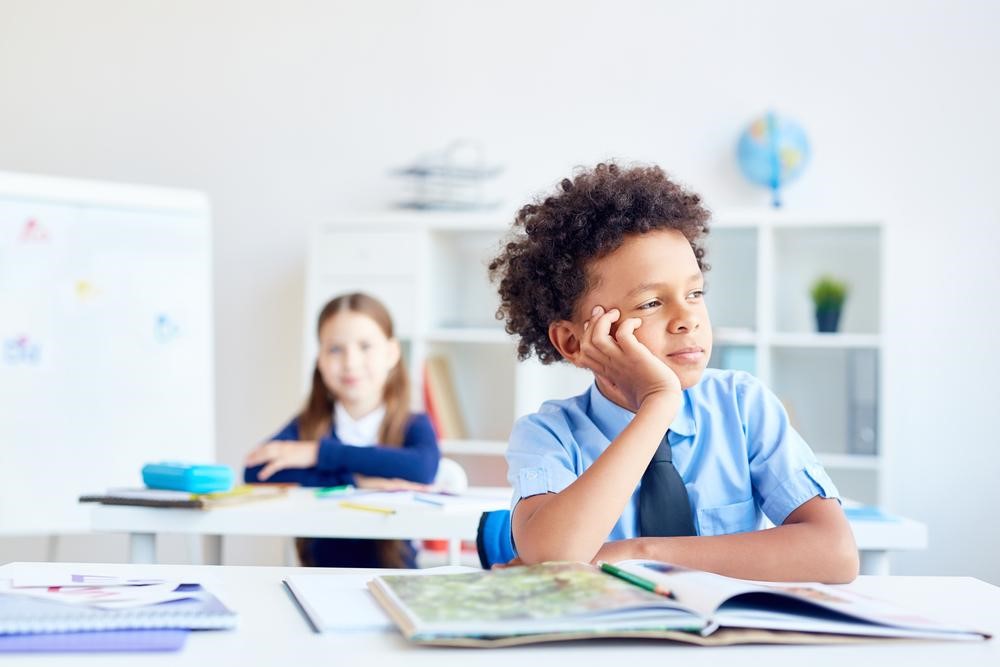The benefits of practicing mindfulness in the classroom are far-reaching for teachers and students. Focusing on mindfulness can yield a more productive and engaged classroom and help individual students overcome some anxiety they may feel in school or with their peers.
Mindfulness is successful when applied consistently, day in and day out. Think of it as a lifetime habit instead of a “coping mechanism.” Disruptive students cannot be “fixed” with a sudden dose of mindfulness, nor can a teacher struggling to maintain order in the classroom expect to apply mindfulness only in emergency situations.
A commitment to mindfulness starts on day one of the school year and lasts until the final dismissal bell rings before summer. It is a practice that will help students grow and mature and strengthen bonds between students and teachers, and peers.
The good news for educators of all ages, backgrounds, and experience levels is that you do not need a degree in psychology or any advanced mental health training to practice and apply mindfulness. All of us are capable of implementing these healthy practices effectively. Read on to learn the simple yet powerful ways you can encourage mindfulness in your own classroom.
What Does Mindfulness Look Like in the Classroom?
It is easy for most of us to picture practicing mindfulness in the form of a yoga pose or a guided meditation session by a babbling brook. A classroom is usually the polar opposite of these zen moments!
Mindfulness in the classroom is about asking the right questions to help frame a particular state of mind. It reduces stress and increases feelings of calm, which helps students make better decisions in the moment. In addition, mindfulness questions in the classroom can improve concentration levels, leading to more engagement and participation among students.
Seven Mindfulness Questions to Encourage Mindfulness in the Classroom

Teachers can incorporate mindfulness activities in the classroom with various questions; this list includes some useful ones to get you started, and you can tweak these to fit your class’s needs.
Once you see how these mindfulness exercise questions spark curiosity, capture attention, and calm disruptive behaviors, you will no doubt want to employ mindfulness daily as a classroom management technique.
Question #1: How Are You Feeling Today and Why Are You Feeling This Way?
The why in this question is certainly the most important part, urging students to consider the reason behind their emotions or anxiety. They may be able to consider that they are sad because they are tired. They may recognize that they are mad because they are hungry after skipping breakfast. By allowing students to better understand their own emotions, they are better equipped to reframe their focus.
Question #2: What Are Three Things You Notice Around You Right Now?
Students are easily distracted throughout the day by everything from their own thoughts and emotions to their peers, the ticking of a wall clock, or even leaves rustling in the trees outside. These distractions can ultimately give way to students sitting in a haze, lacking focus on one thing.
This mindfulness question increases focus, prompting students to consider their immediate surroundings and zero in on three specific things. This exercise and mindfulness technique shakes off the brain fog and reorients the student’s concentration.
Question #3: What Do You Love About Yourself?
Pointing students toward positive self-reflection and thought is a wonderful way to increase confidence and get them thinking about and articulating their own positive attributes. Allowing students to vocalize what they love most about themselves is a tremendous growth exercise, especially for those who may struggle with anxiety in the classroom.
Because it can be intimidating for some students to answer this type of question, be sure you create a comfortable environment for them to express their replies. Perhaps this could be done in small group settings or written format with a mindfulness journal.
Once you know what students love about themselves, you can also make a conscious effort to hone in on those qualities or traits in the classroom. For example, if Liam loves his ability to speak two languages, give him a chance to teach a few new words to his peers.
Question #4: What Skill Do You Want to Master and How Can You Get Started?
One of the ways teachers can best encourage students to tackle new challenges is to consider them in small steps. Ask students what they want to achieve and then help them think of the initial steps to get there; this kind of skill building translates into everything from healthy study habits to the ability to stay calm under pressure.
No gymnast starts with a backflip dismount from a balance beam. They start by simply walking the balance beam and working their way up to a simple dismount. When students connect the dots between an end goal and each of the small steps it takes to get there, they are better equipped to take that first step toward any goal.
Question #5: Who Are Three of Your Best Friends, and Why Are You Friends With Them?
Students can learn a great deal about the way they develop and manage relationships with others when they consider what draws them to specific people. Having students consider the friends they choose and why will help them learn more about themselves through mindful awareness, making this a simple yet effective, mindful question.
Question #6: What Would Motivate You to Learn Today?
Motivation can change daily, and it is useful to frame the question this way to help students think about what they can focus on immediately. Similarly, teachers can use this information to get the best out of students and direct their energies to the places that motivate them.
While you cannot tailor a lesson plan to 25 different styles each day, you may be able to tap into a few different motivations each day that will yield an overall positive result in the classroom.
Question #7: What Is One Thing You Have the Power to Change to Improve Our Classroom?
Students often focus on the rules that constrain them or the things they do not like about a classroom. By forcing them to think about what is in their control, they can enter the class each day, aware of what they can do to make it a positive experience.
Some might realize that means arriving a few minutes early to prepare; others might decide they can improve the classroom experience by participating more or asking more questions.
Mindfulness questions can tremendously impact your classroom and improve students’ and teachers’ focus, growth, emotion regulation, and personal development.
Awareness of this need is the first step for teachers, who can turn these simple questions into a mindfulness program that will deliver results.




